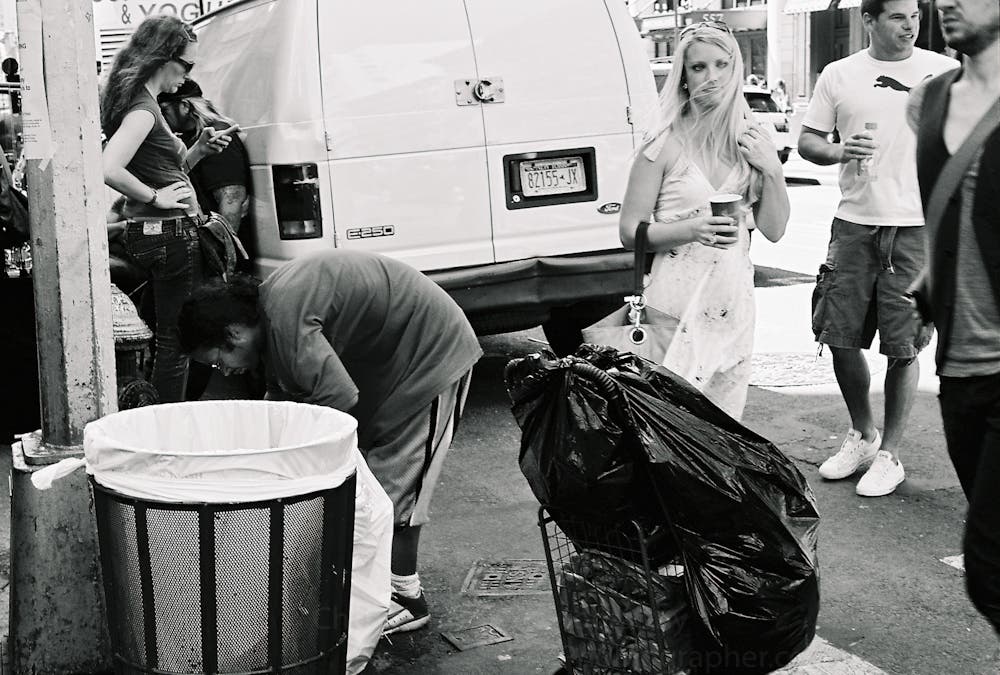A very big question often is asked in street photography: should you photograph the homeless? Many street photographers will say it’s against ethics, but a lot of them just plain don’t care. In this post, I’m going to share my thoughts on when it’s okay to document the homeless as well as those in pain and suffering.
When It’s Not Street Photography and You’re Not Taking the Photo Just to Bring More Attention to You Through Your Followers
Street photography is a type of journalism, but it’s different and doesn’t abide by ethics. A photo of a homeless person begging on the streets may cause action in Europe while it won’t do much in America because we’re desensitized to it. If you’re taking a photo of someone in an unfortunate situation, consider a few factors. The biggest one to keep in mind is their socio-economic background. Is this a photo of someone vomiting on the street after a night out? Cool, I don’t know why you’d find this subject matter fascinating but that’s fine. Those folks are typically doing good enough make those lifestyle choices.
Are you photographing someone with a disability who is begging on the street? That’s not ethical. And haring the images and getting double taps on social platforms isn’t ethical either. If you’re attaching a cause to it such as starting a GoFundMe to help those people, that’s a different story.
But don’t profess to be taking a photo of someone and asking the world at large to help those subjects otherwise.
When You’re Not Paying for the Images
Traditionally speaking, paying for photos is unethical in photojournalism. It’s a manipulation of the events in front of you, and you’re paying people to look a certain way. In situations like this, document problems as they are happening, don’t pay money to put on a spectacle for the camera.
When Telling a Story for a Dedicated Outlet
Here is where things start to become more ethical. When a respected publication or outlet of some sort is trying to tell about pain, suffering, and life, it’s ethical. They’ve got a large audience and reach for stories like this. Often too, there are editors involved that make decisions that ensure people don’t get hurt, are harmed, etc. In most situations, those people are also taking different precautions. One of more candid approaches to this is the work Andrew Callaghan does for Channel 5 News, formerly of All Gas No Brakes.
Obviously this includes more than just documenting people without interacting with them. With lots of street photography of the homeless, there is no interaction with the subjects. To tell their stories, you need to interact with them.
When the Photos Can Sincerely Bring About Positive Change For Society
Are you sure your photo can bring about change? What’s your approach and plan for this? Will you be doing this project for a long time?
When You’re Not Personally Benefiting From the Images
Always keep in mind that you shouldn’t be personally benefiting from the work. Sure, you might be credited with the photos you’re shooting and the story being told. But the benefits should go to the people you’re telling the story about.



Leave a Reply